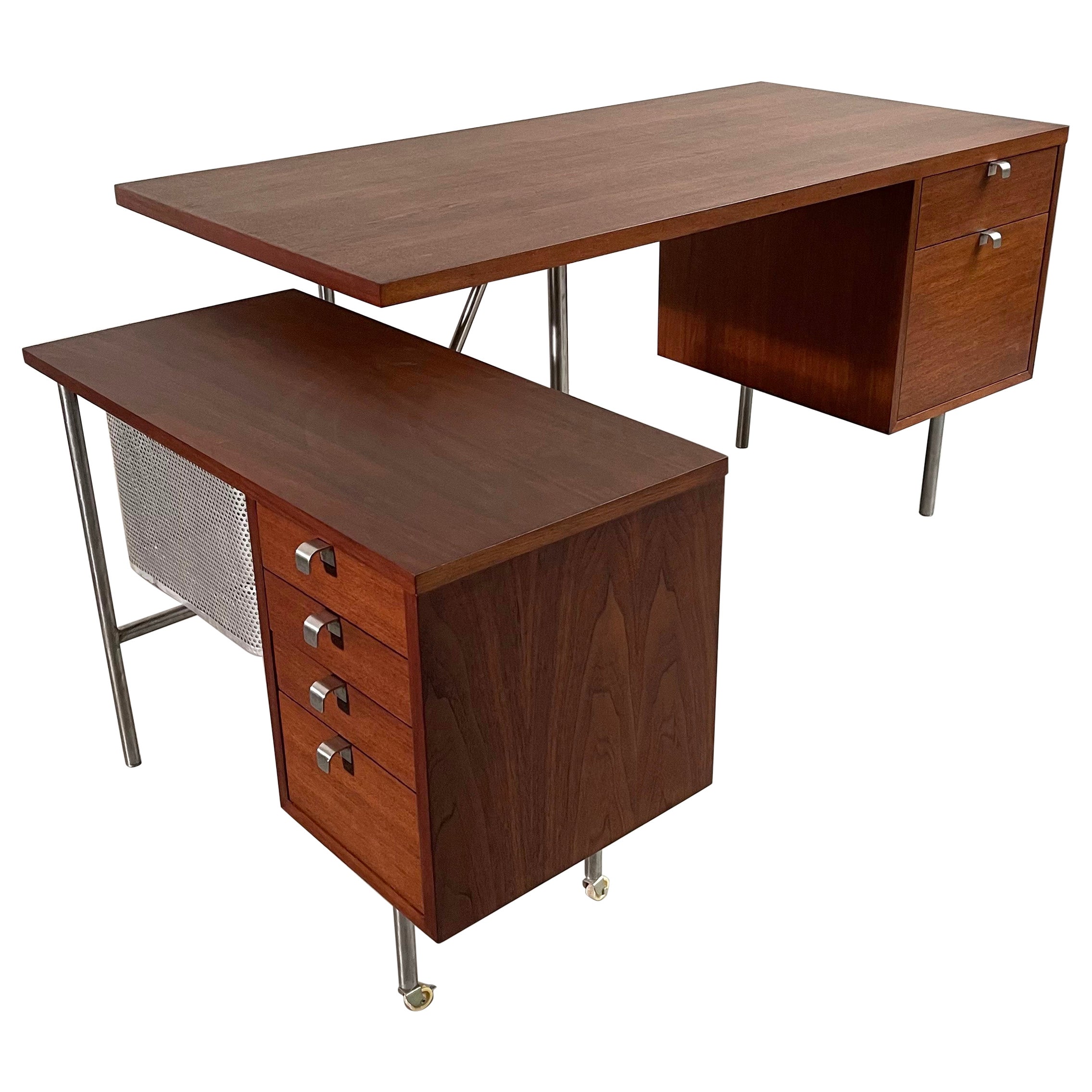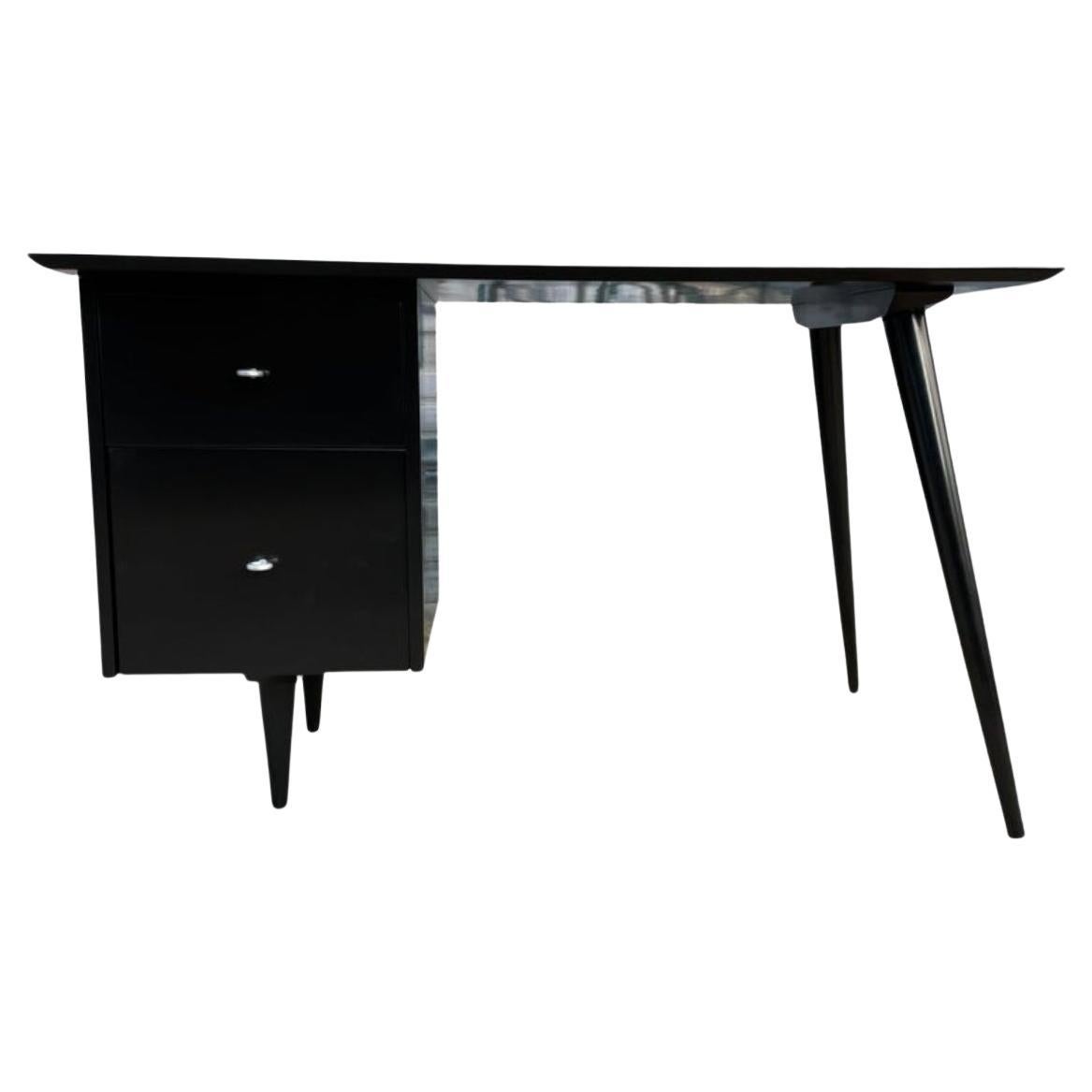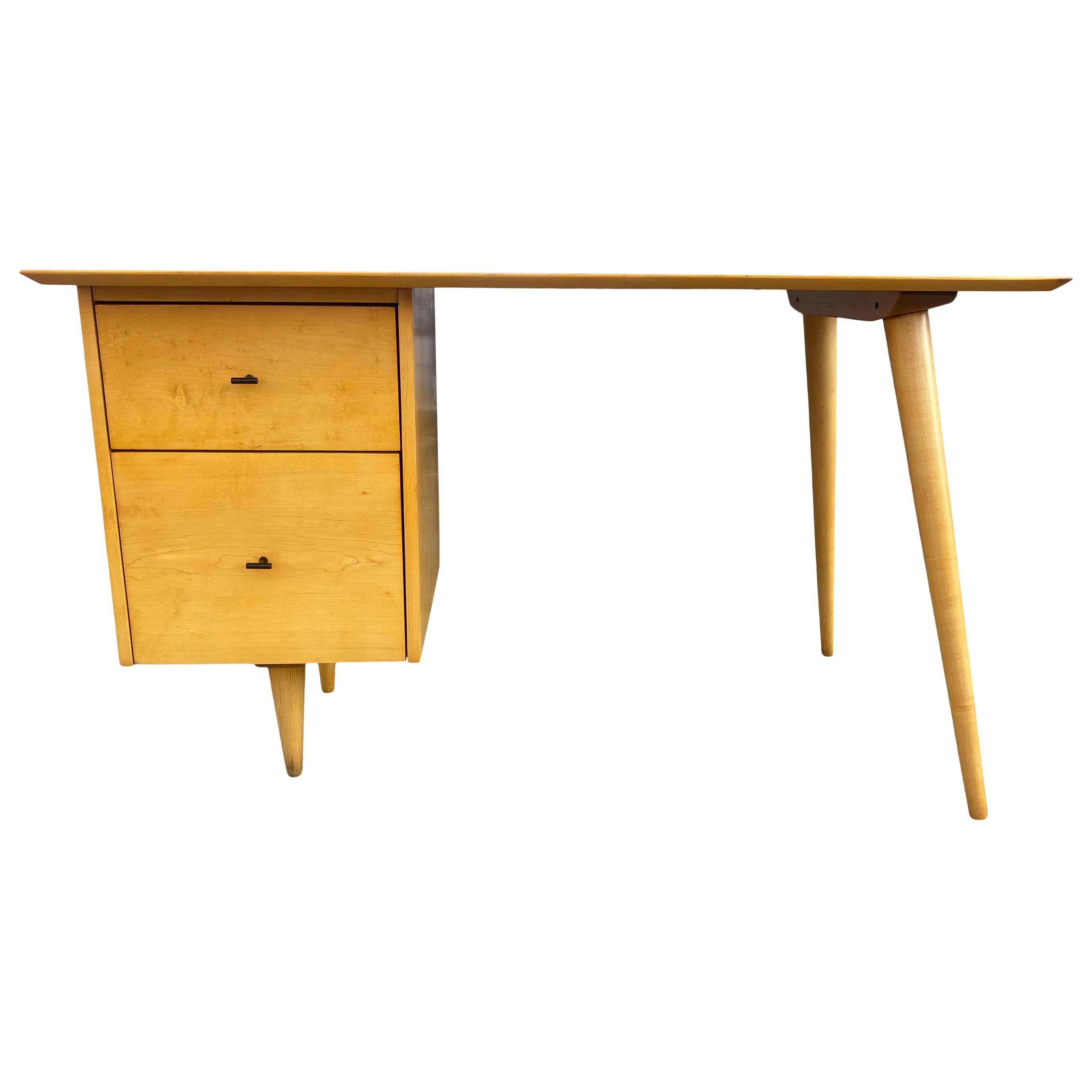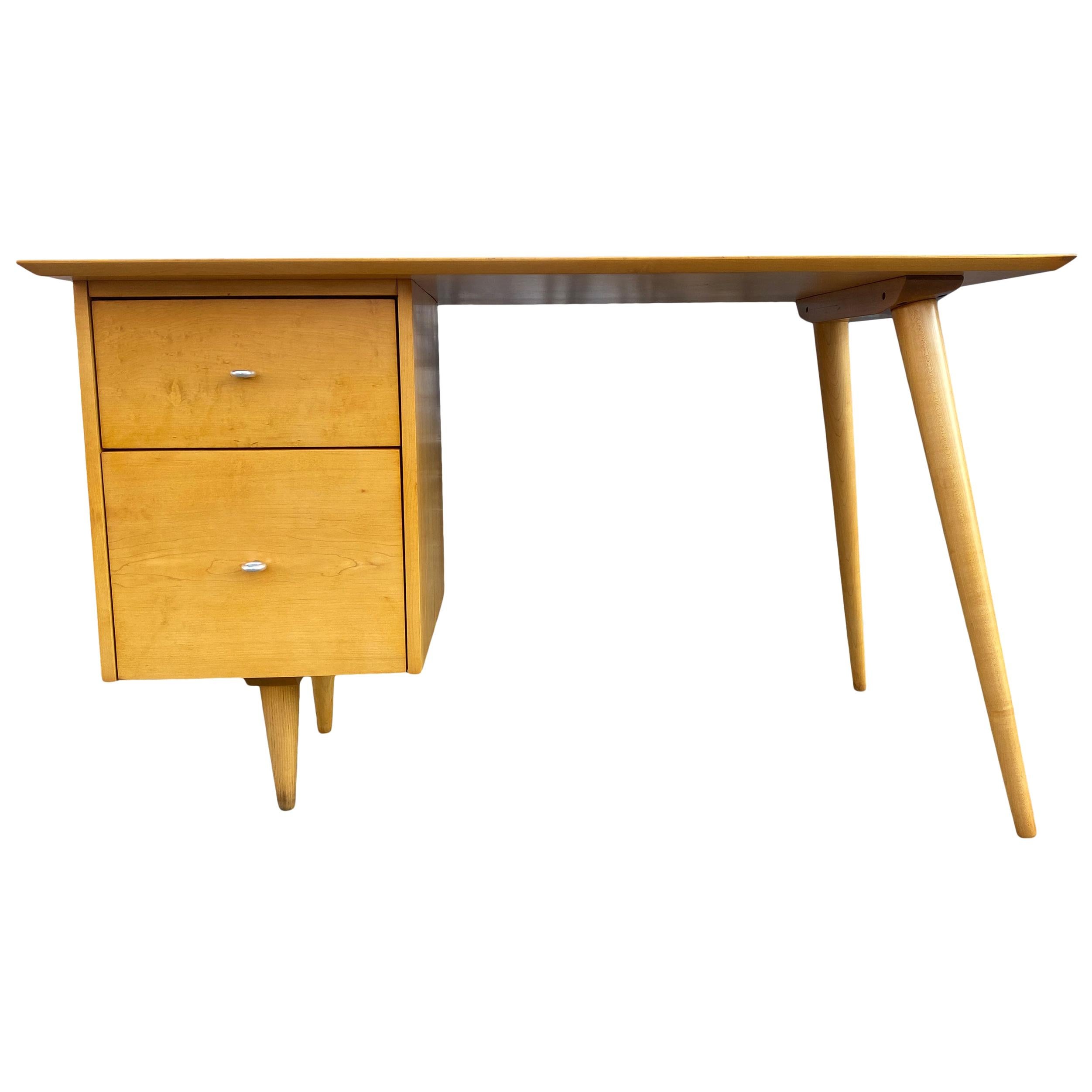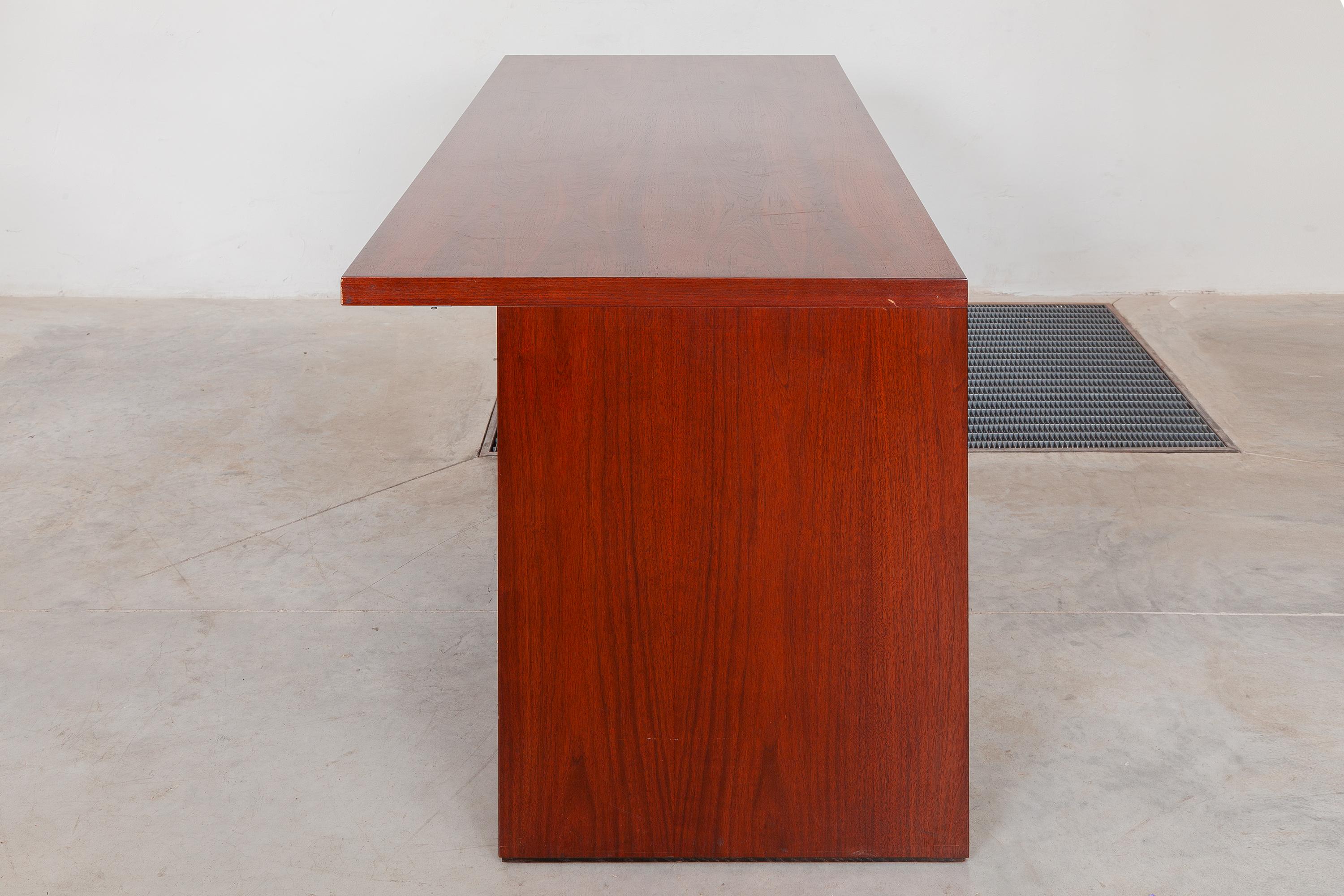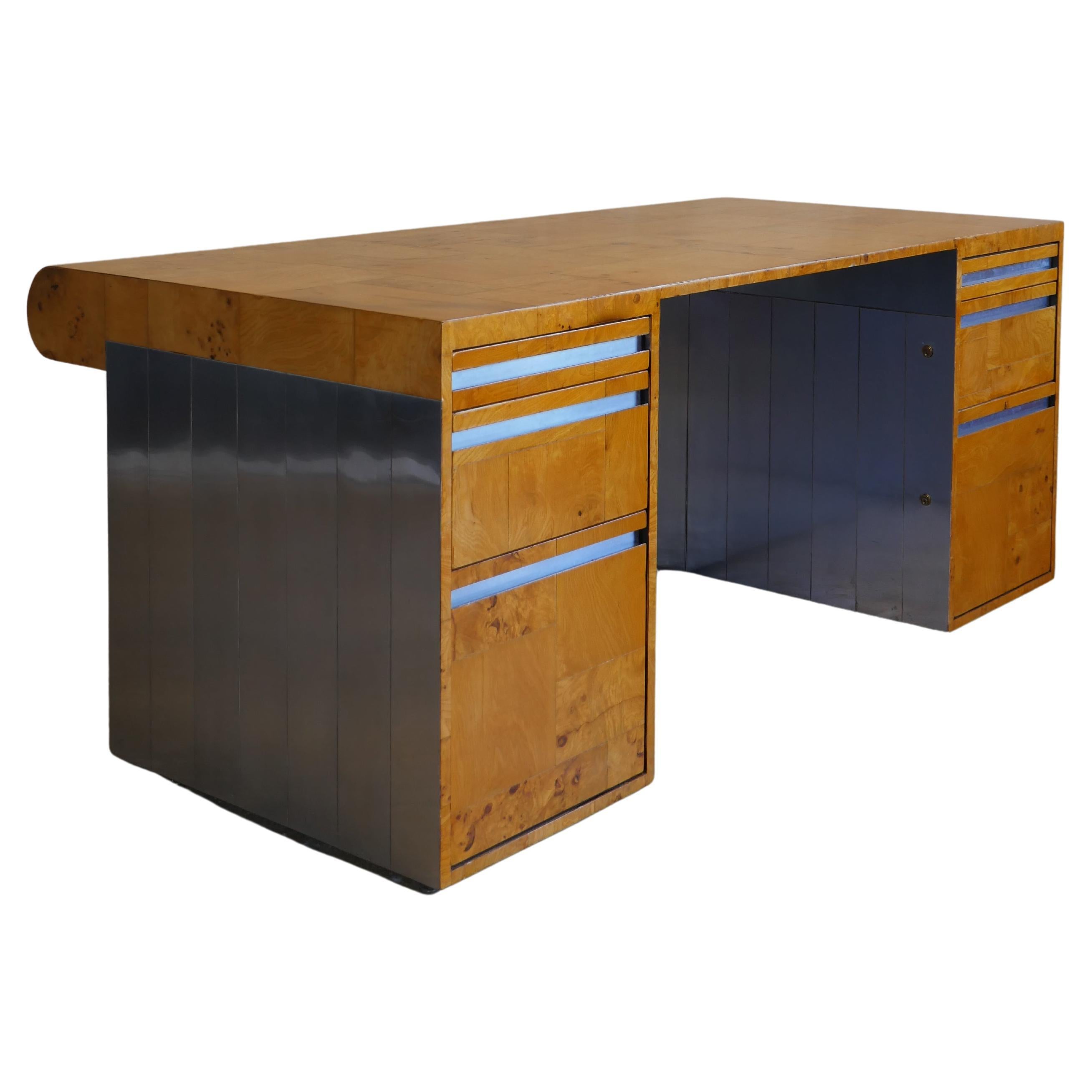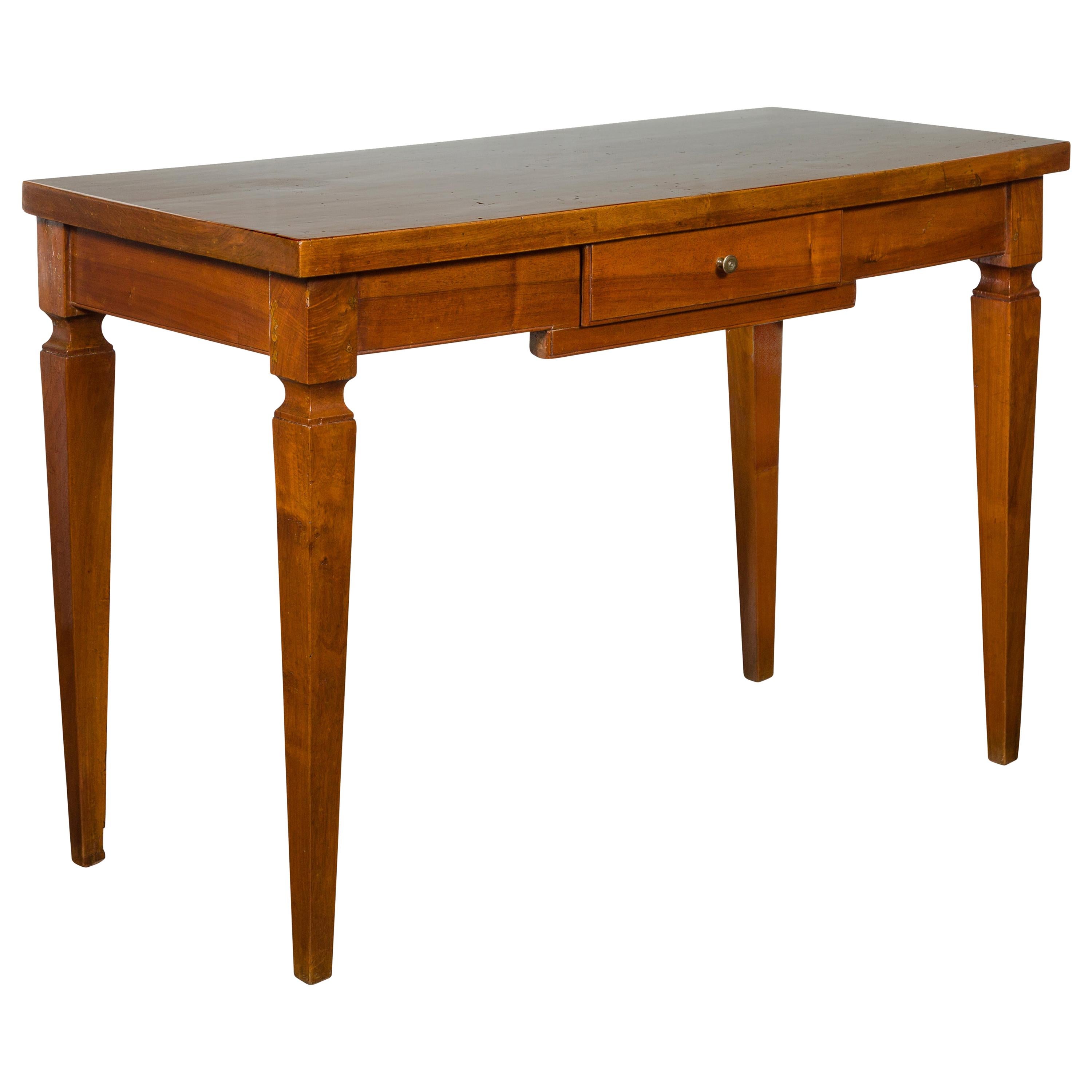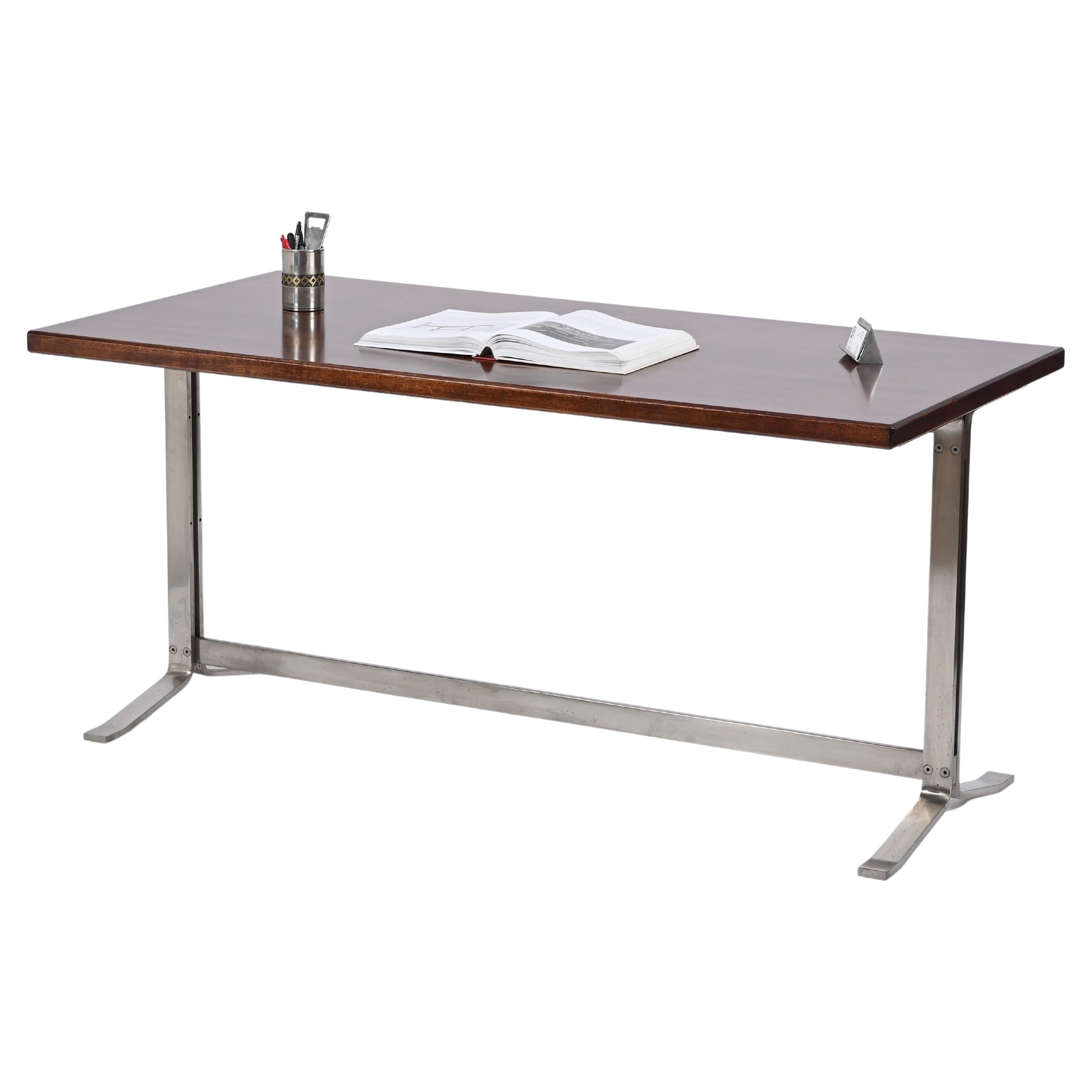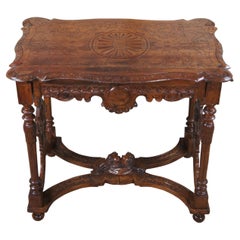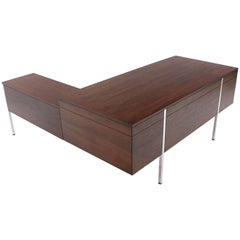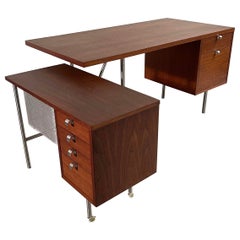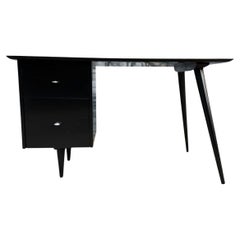
Midcentury Walnut Executive School Teacher Desk Typewriter Drawer Library
View Similar Items
Want more images or videos?
Request additional images or videos from the seller
1 of 13
Midcentury Walnut Executive School Teacher Desk Typewriter Drawer Library
About the Item
- Dimensions:Height: 30 in (76.2 cm)Width: 60 in (152.4 cm)Depth: 34 in (86.36 cm)
- Style:Mid-Century Modern (Of the Period)
- Materials and Techniques:Walnut
- Period:Mid-20th Century
- Date of Manufacture:Mid-20th Century
- Condition:Very Good; Gently Used Light Edge Wear.
- Seller Location:Dayton, OH
- Reference Number:Seller: 245171stDibs: LU5343219884372
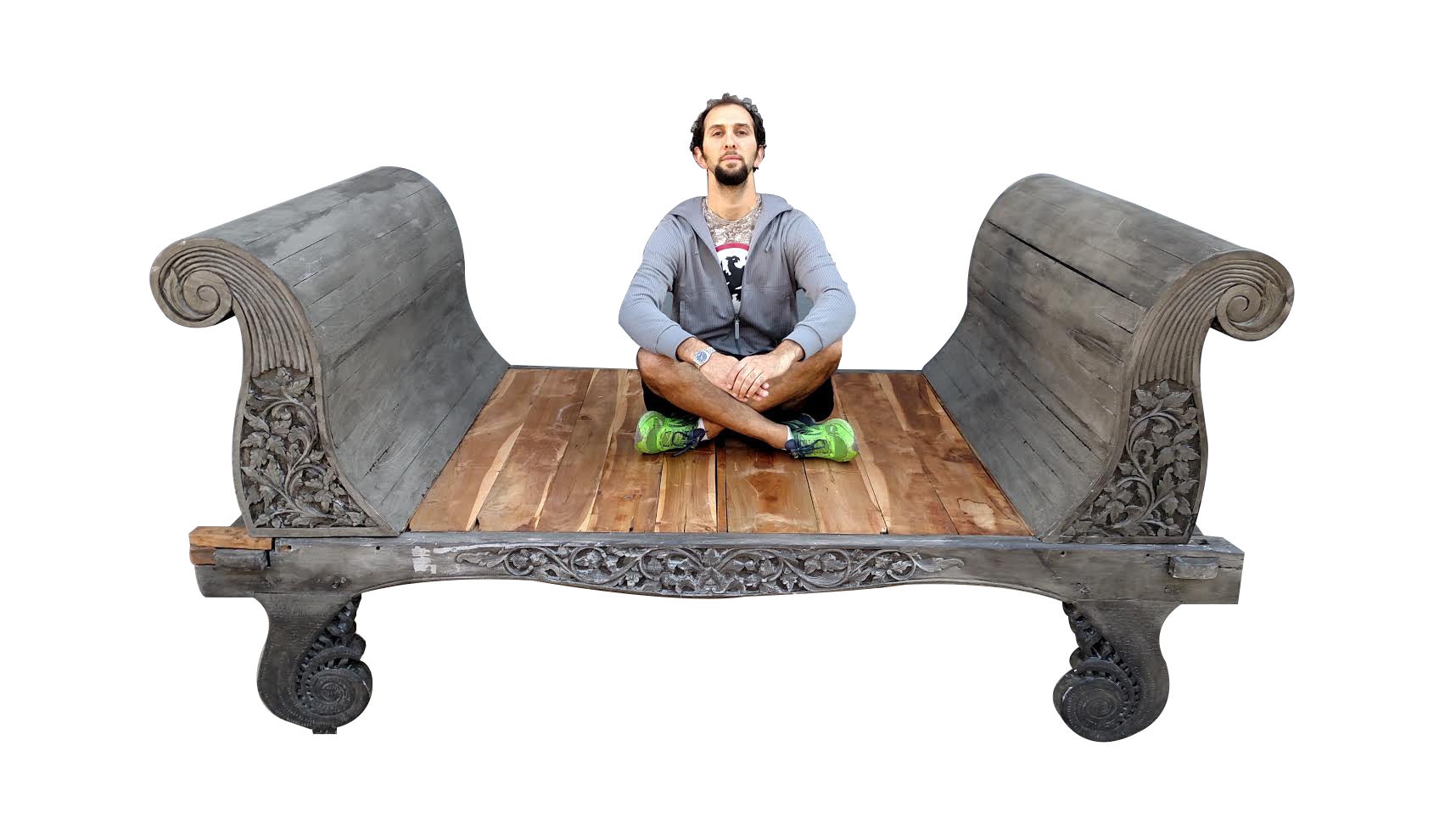
About the Seller
4.9
Platinum Seller
These expertly vetted sellers are 1stDibs' most experienced sellers and are rated highest by our customers.
Established in 2010
1stDibs seller since 2020
1,121 sales on 1stDibs
More From This SellerView All
- Antique Italian Renaissance Revival Walnut Figural Library Table Writing Desk 52Located in Dayton, OHAntique Neo-Renaissance Revival parlor / library table or writing desk, circa 1870s Made of walnut featuring Neoclassical styling with high relief figural carvings of cherubs / putti...Category
Antique 1870s Renaissance Desks and Writing Tables
MaterialsWalnut
- Antique Quartersawn Oak French Renaissance Revival Dining Table Library DeskLocated in Dayton, OHAntique 19th Century Figural French Renaissance Revival / Elizabethan style Dining or Library Table. A rectangular form made from oak with a quartersawn top. Features a thick gadrooned apron with ""S"" scrolls, gothic arches, drop finials and carved lions heads along each corner. The table is supported by hand turned robust baluster supports leading to an ornate carved base featuring Delphin (Dolphin) feet. Includes original draw leaf style extensions and make shift table...Category
Antique 1880s Renaissance Revival Dining Room Tables
MaterialsOak
$3,055 Sale Price35% Off - Dakota Jackson French Art Deco Postmodern Mahogany Executive Partners Desk 96"By Dakota JacksonLocated in Dayton, OHVintage Dakota Jackson post modern Art Deco style executive partners desk featuring mahogany with leather insert and stainless steel frame. A V-Shape pattern veneer top with Black Leather inset. 2 pedestal cabinets below: each with 2 standard drawers and 1 file drawer, front and back. Polished Stainless Steel drawer pulls, post, floor plates, and arced trestle supporting desktop. DJ Chelsea Black Leather, Polished Polyresin finish. Dakota Jackson (born August 24, 1949) is an American furniture designer known for his eponymous furniture brand, Dakota Jackson, Inc.,[1] his early avant-garde works involving moving parts or hidden compartments,[2][3] and his collaborations with the Steinway & Sons piano company.[1] Jackson helped establish the art furniture movement in 1970s SoHo,[4][5] later becoming a celebrity designer in the 1980s.[6][7][8] His background in the world of stage magic helped him get his first commissions and is often cited as the source of his point-of-view.[6][9] Early life Dakota Jackson was born on August 24, 1949, and grew up in the Rego Park neighborhood of Queens, New York. Stage Magic Jackson's father, Jack Malon, was a professional magician.[10] Mr. Malon learned the trade from his own father, who studied stage magic in early 20th century Poland.[1] Jackson began studying magic at a young age and sometimes performed with his father.[11] Jackson's name, in fact, grew out of a road trip to Fargo, North Dakota.[11] Throughout his adolescence and into his early 20s, Jackson immersed himself in the world of magic.[2] In 1963, Jackson began to perform in talent shows at his junior high school, William Cowper JHS 73 (which is known today as The Frank Sansivieri Intermediate School),[12] and at children's birthday parties.[13] Jackson also began to build his own props, including large boxes for sawing a woman in half and small boxes from which doves would emerge in full flight.[11] Jackson acknowledges the importance of these early experiences with magic to his later career as a furniture designer: "The demands of performance taught me how to discipline myself to achieve aesthetic ends."[1][2][14] After Jackson graduated from Forest Hills High School in 1967, he continued performing as a magician, working in art galleries, night clubs, touring in the Catskills, and giving private performances at society events.[2][13][15] When he was 17, Jackson had studied with magician Jack London to learn the dangerous bullet catch trick.[16] "What appealed to me was the notion of doing things that appeared miraculous" Jackson once recalled.[6] "I was interested in spiritualism. I was interested in things like bullet catching, things that really challenged individual sensibilities, that were frightening, on the edge."[2] He didn't find the opportunity to perform the trick publicly until a decade later at Jackson's final professional performance as a magician.[1] It was documented in Andy Warhol's Interview (magazine), in a story titled "Dakota Jackson bites the bullet."[1][16] Jackson admits that he sometimes tires of references to his magician background, although he acknowledges it as an important part of his history.[2] The Downtown Arts Scene In the late 1960s, Jackson moved into a loft on 28th Street in Chelsea.[1][17] Jackson became part of the Downtown scene, a community of "artists, dancers, performers, and musicians" who moved to the neighborhood for the cheap rent and social life.[1][8][17][18] In October 1970, Jackson performed with the Japanese group Tokyo Kid Brothers at New York's La MaMa Experimental Theatre Club (also known as Café La MaMa) in a rock musical production called "Coney Island Play" ("Konī airando purē).[19] The show explored themes of cross-cultural communication and understanding[19] and was a follow up to the group's debut performance of "The Golden Bat" at La MaMa earlier that summer.[20][21][22] Jackson played the part of a "clever conjurer."[19] Over the next few years, Jackson became interested in minimalist dance and performed in the dance companies of Laura Dean and Trisha Brown.[2][15][23] Jackson credits his exposure to minimalism and minimalist dance in particular as having had a strong influence on his approach to design; in 1989, Jackson told the Los Angeles Times: For me the essential fineness of a design is in the idea, not the object itself ... In minimalism, the object is pared down to its basic meaning by stripping away all the excrescence ... —those elements that do not contribute to the pure idea.[24] Design career In the early 1970s, as he experimented with performance and dance, Jackson began branching out as a special effects consultant to other magicians, film producers, and musicians[2][23] such as Donna Summer.[6][9] The loft also gave Jackson an opportunity to apply his creativity and building skills: "These were times when lofts were not ... luxury condominiums. These were tough, tough raw spaces ... and we artists, bohemians, creative people, we created our environment. So I had to build".[17][25] Recognizing his skills as a builder, Jackson decided to shift away from performance and become a full-time maker.[1][15][17] He began making a variety of objects, including furnishings for other artists and magic boxes with hidden compartments for art collectors and galleries.[17][24] Jackson's social connections helped spread word about his work[15] and this led to his first commissions.[1] Early Commissions Desk for John Lennon by Dakota Jackson In 1974, Jackson's career as a designer began when Yoko Ono asked him to build a desk with hidden compartments for husband John Lennon.[26] "She wanted to make a piece of furniture that would be a mystical object; that would be like a Chinese puzzle," Jackson recalled in a 1986 interview published in the Chicago Tribune.[6] The result was a small cubed-shaped writing table with rounded corners reminiscent of Art Deco era style.[15] Touching secret pressure points opened the desk's compartments.[23] This commission helped build Jackson's reputation and allowed him to merge his experience as a magician and performer with his developing interest in furniture.[27] In 1978, a bed designed for fashion designer Diane von Furstenberg garnered Jackson even more notoriety.[8][10][28] [29] Called "The Eclipse", the bed was described in The New Yorker as "large, astounding, sumptuous, with sunbursts of cherry wood and quilted ivory satin at head and foot."[10] A lighting system positioned behind the headboard switched on automatically at sunset and spread out rays of light "like an aurora borealis,"[2][17] which grew brighter and brighter until turning off at 2 am.[23][30] Commissions like these continued to come in[8] and Jackson soon became known as a designer to the rich and famous.[30] Some of his other clients from this period included songwriter Peter Allen, Saturday Night Live creator and producer Lorne Michaels, Rolling Stone publisher Jann Wenner, and soap opera actress Christine Jones.[8] The American Art Furniture Movement and the Industrial Style In the late 1970s, Jackson was among a small group of artists and artisans producing and exhibiting hand-made furniture in New York.[5][31] Jackson and his peers were part of the "American Art Furniture Movement," a group sometimes called the "Art et Industrie Movement,"[32] named after the leading art furniture gallery of the era,[32] Art et Industrie, founded by Rick Kaufmann in 1976.[33] In a 1984 Town & Country article titled "Art You Can Sit On," Kaufmann said he created the gallery to "serve as a locus to the public for artists and designers creating new decorative arts."[31] The works on display were "radical objects" that drew from a number of fine art traditions, including "Pop, Surrealism, Pointillism and Dada [which were] "thrown together with the severe lines of the Bauhaus and the Russian avant-garde, mixed with Mondrian's color and filtered through a video sensibility—all to create a new statement."[31] The article described Jackson as a "ten-year veteran of the genre" and pointed to the "clean forms and quiet colors" of his furniture.[4] Jackson showed a variety of industrial-looking lacquer, metal, and glass works at Art et Industrie, including his Standing Bar (also known as the Modern Bar),[33] a lacquered cabinet that Jackson designed in 1978 for his wife (then-girlfriend) RoseLee Goldberg.[13] Other works from this period include the T-Bird Desk, Self-Winding Cocktail Table, and the Saturn Stool...Category
Late 20th Century Art Deco Desks and Writing Tables
MaterialsStainless Steel
- Arthur Brett English Traditional Mahogany Tooled Leather Top Executive Desk 72"By Arthur BrettLocated in Dayton, OHMid 20th Century Arthur Brett & Sons Executive Desk. A rectangular form made from mahogany with tooled leather top. Features three large dovetailed drawers within the frieze. Each dr...Category
Mid-20th Century Desks and Writing Tables
MaterialsLeather, Mahogany
- Antique Thomas Turner Manchester English Mahogany Writing Desk Library TableBy Thomas TurnerLocated in Dayton, OH"An antique Thomas Turner English Victorian era writing desk. Made from solid mahogany with a tooled red leather inset top. Features 2 hand dovetailed drawers within the frieze, squa...Category
Antique Late 19th Century Victorian Desks and Writing Tables
MaterialsMahogany
- Antique Chippendale Mahogany Kneehole Bowfront Library Office Table Writing DeskLocated in Dayton, OHAntique Chippendale style kneehole writing desk featuring rectangular form with bowfront, eight drawers, brass batwing hardware and polished glass top. Originally purchased at the Rike Kumler...Category
Early 20th Century Chippendale Desks and Writing Tables
MaterialsMahogany
You May Also Like
- Dunbar Large Walnut Executive Desk with ReturnBy Edward Wormley, Dunbar FurnitureLocated in Rockaway, NJSolid chrome legs walnut Dunbar desk with return.Category
20th Century American Mid-Century Modern Tables
MaterialsChrome
- George Nelson Walnut Executive and Typewriter Desk SetBy George Nelson, Herman MillerLocated in Brooklyn, NYMid-Century Modern, Executive Office Group desk model 9959 and typewriter return desk model 4751 by George Nelson for Herman Miller features a dark walnut finish with steel legs, alu...Category
Mid-20th Century American Mid-Century Modern Desks and Writing Tables
MaterialsSteel
- Midcentury Paul McCobb #1560 Double Drawer Desk Black Lacquer FinishBy Planner Group, Paul McCobbLocated in BROOKLYN, NYBeautiful Paul McCobb planner group #1560 double drawer desk Black Lacquer on maple with aluminum ring knobs solid maple. Desk is in great condition. Very beautiful designed desk on ...Category
Mid-20th Century American Mid-Century Modern Desks and Writing Tables
MaterialsAluminum
- Midcentury Paul McCobb #1560 Double Drawer Desk Blonde Maple Finish T pullsBy Planner Group, Paul McCobbLocated in BROOKLYN, NYBeautiful Paul McCobb Planner Group #1560 double drawer desk blonde maple finish with steel T pull knobs solid maple. Desk has been professional refinished. Very beautiful designed d...Category
Mid-20th Century American Mid-Century Modern Desks and Writing Tables
MaterialsSteel
- Spanish Walnut Library Table Desk with Two Drawers, 18th CenturyLocated in San Francisco, CAAn exuberant library table or desk having a walnut molded edge around the top, two drawers, and fluidly carved legs and support braces. Spanish, 18th century.Category
Antique Early 18th Century Spanish Desks and Writing Tables
MaterialsWood
$7,520 Sale Price20% Off - Modern 3 Drawer Executive DeskLocated in Brooklyn, NYThis desk is comprised of exotic Shedua hardwood and a solid hand polished stainless steel base. The three equal sized drawers provide plenty of storage for pens, small electronics a...Category
2010s American Mid-Century Modern Desks and Writing Tables
MaterialsWood
$4,700 / item
Recently Viewed
View AllMore Ways To Browse
Mid Century Modern Library Desk
Used Teacher Desk
Teachers Desk
Teachers Desk Vintage
Typewriter Table
Retro Teachers Desk
Tapered Leg Desk
Large Modern Desk
Carved Writing Desk
Italian Writing Table
Mahogany Table With Leather Top
French Mid Century Desk
Small Desks
Vintage Danish Teak Desk
Walnut Mid Century Desk
Mid Century Desk Walnut
Mid Century Walnut Desk
Antique Desk Oak

